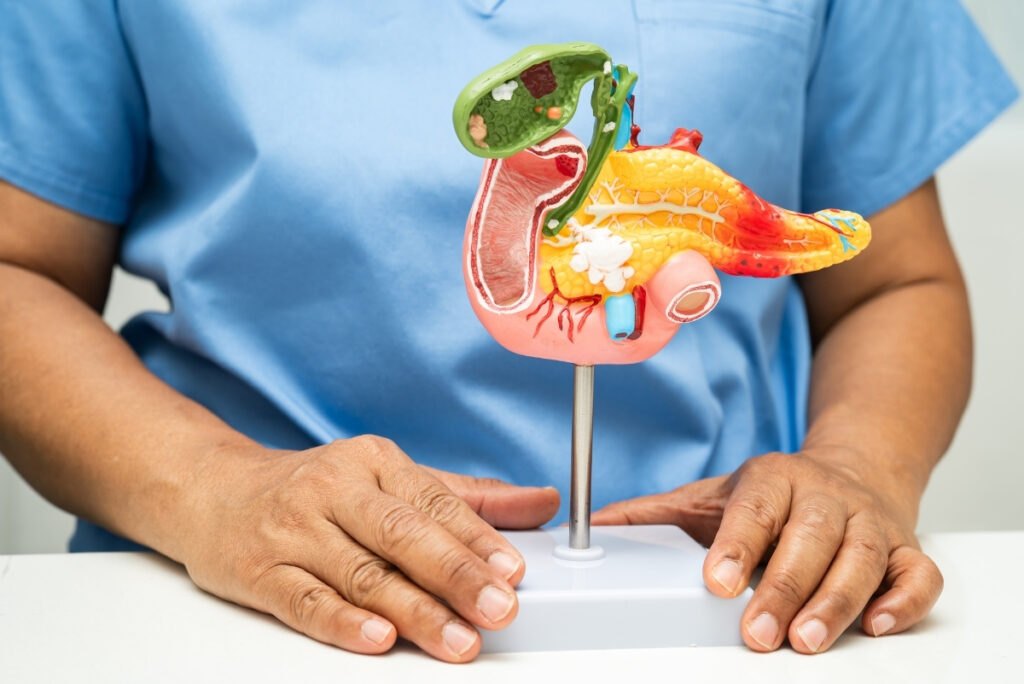
Introduction
Stomach cancer, or gastric cancer, is a devastating disease – because it often flies under the radar until it’s too late. Because early diagnosis dramatically improves the odds of getting treated and surviving. In this article, we’re going to deep dive into the risk factors, symptoms, diagnosis and prevention of early detection of stomach cancer.
Understanding Stomach Cancer
Stomach cancer occurs when malignant cells grow in the stomach lining. Adenocarcinoma is the most common histologic type at 90–95%. Other rare types are lymphoma, GISTs, and carcinoids. First signs of cancer can be subtle, so it’s important to know the risks and get screened.
Risk Factors for Stomach Cancer
Here are a few factors that increase your risk for stomach cancer:
- Helicobacter Pylori Infection: Persistent H. pylori infection is strongly linked to gastric cancer.
- Diet: A lot of smoked, salty and processed food.
- Smoking and Alcohol: Tobacco and alcohol contribute to stomach cancer.
- Family History: A Family history of gastric cancer is a risk.
- Age and Gender: It most commonly strikes men older than 50.
Knowing these risks gives you the power to be ahead of the curve on early detection.
Early Symptoms of Stomach Cancer
Stomach cancer is hard to catch early because its initial symptoms can resemble common
digestive complaints. Watch for:
- Frequent Indigestion or Heartburn: Repeated upper abdominal pain. Unexplained
weight loss. - Nausea/Vomitin: Constant nausea or vomiting, sometimes with blood streaks.
- Loss of Appetite: Early satiety or decreased appetite.
See a doctor if they persist, especially if you have risk factors.
Diagnostic Methods for Early Detection
It relies on a mix of doctors’ exams, imaging and lab tests.
- Endoscopy: Upper GI endoscopy is the gold standard. A flexible tube with a camera closely examines the stomach lining, allowing biopsies from suspicious areas for lab analysis.
- Imaging Tests CT scan: 1. Provides detailed cross-sectional images of the stomach and surrounding tissues.
2. MRI – Identifies tumours and lymph node metastasis.
3. EUS (Endoscopic Ultrasound): couples endoscopy with ultrasound to visualise the layers of the stomach wall and adjacent lymph nodes. - Laboratory Tests: 1. Blood Tests: CBC may reveal anaemia from slow internal bleeding.
2. Tumour Markers: CEA, CA 19-9 may signify abnormal growth, but are not definitive alone.
Screening Recommendations
- High-risk individuals are to be regularly screened.
- Who to screen: Family history, chronic H. pylori, previous ulcers
- Screening Frequency: And endoscopic surveillance could be recommended every 1-3
- Years, depending on risk. Pylori Testing. Once detected and treated, the infection does not cause cancer.
Lifestyle Measures to Reduce Risk
Lifestyle changes slash stomach cancer risk:
- Balanced Diet: Incorporate fresh fruits, vegetables and whole grains and reduce processed and smoked foods.
- Avoid Tobacco and Alcohol: Quitting smoking and reducing alcohol consumption lowers risk.
- Exercise: Remaining at a healthy weight is also good for your digestive system.
- Digestive health: Any ongoing digestive issues should be checked out by a doctor.
Awareness and Prompt Medical Attention
Early detection depends on awareness. Individuals should:
- Recognise persistent digestive symptoms.
- Consult a gastroenterologist for evaluation.
- Abnormal test results – follow up, pronto.
- Public awareness/education campaigns can promote early diagnosis, associated with improved survival.
Advancements in Detection
Medical advances are making earlier diagnosis better:
- Molecular Testing: Genetic tests can identify higher inherited risk.
- State-of-the-Art Imaging: PET-CT scans find tiny tumours and early metastasis.
- Minimally invasive endoscopy: HD imaging to better see precancerous lesions.
They also assist us in making early diagnosis more achievable, which, in turn, means better treatments.
Conclusion
It is very important to diagnose stomach cancer at an early stage. Knowing the risk factors, recognising symptoms, and timely access to diagnostic evaluations like endoscopy and imaging are crucial. Early detection can, along with lifestyle changes and regular monitoring, not only preserve quality of life but also enhance treatment success.
